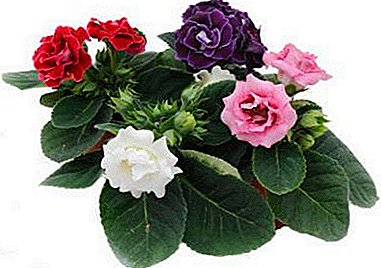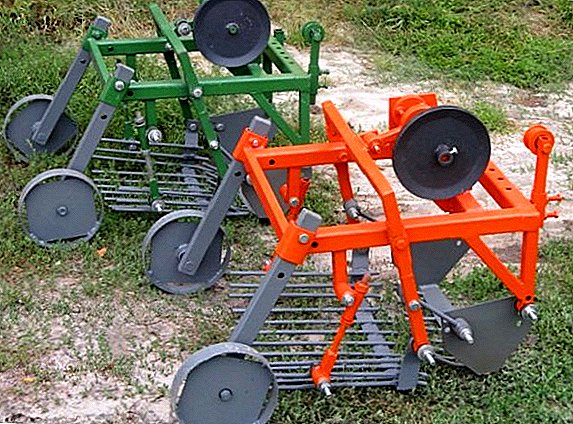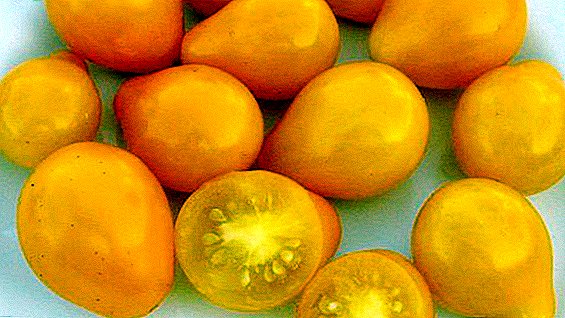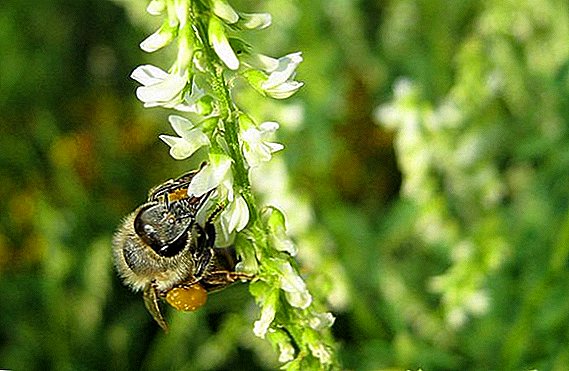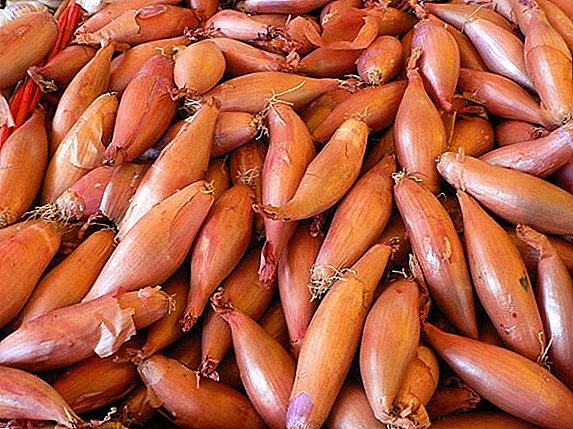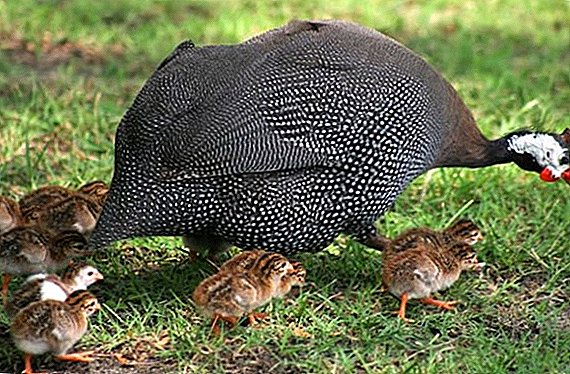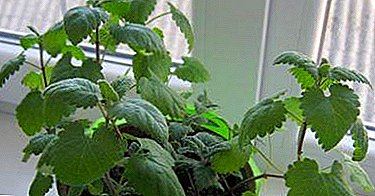
On cold winter evenings, you want to warm up with a cup of hot tea, smelling of summer and herbs. And this desire is quite feasible!
By planting fragrant and healthy lemon balm in a pot on the windowsill, you will provide yourself with herbal tea, and other drinks, all year round.
In the proposed article we will talk about the best varieties of lemon balm for home cultivation, as well as the intricacies of planting and caring for the fragrant plant.
The best varieties for growing at home
Many are interested in whether it is possible at home to plant a plant in a pot. Definitely yes. For planting in a container the following varieties of lemon balm are ideal.
"Lemon Flavor"
The plant reaches a height of 60 centimeters, and the total weight of dark green foliage can reach 120 grams. It has a pronounced aroma, can be used both fresh and dry.

"Pearl"
An erect perennial plant grows to 70 cm, and the yield can reach 5.6 kg per bush for the entire season.

"Dozy"
Perennial herbaceous plant. The leaves are dark green, pubescent. The flowers are small, white. The height of an adult bush can reach 70 - 90 centimeters. It has a delicate lemon flavor.

"Mojito"
Perennial, growing to 50 - 60 cm in height. It has a bright taste and lemon aroma. Ideal plants for the preparation of tea and salads, snacks, sauces. Harvest - 4 kg from a bush from the second year of growth.

"Pure gold"
A bush compact, foliage of a golden shade. The flowers are white at first, after - become with a purple tint.

Choosing a place
This spice is perfect for growing in an apartment: it will find a place both on the windowsill, and on the loggia or balcony (if they are heated in winter, but it can feel good at + 5C - + 10C), just enough light (preferable window direction is east, south, southwest).
Priming
The soil that is needed by Melissa should be loose and nutritious.well drained. The reaction of the soil should be neutral or slightly acid.
For planting in a pot, you can buy a universal substrate in a specialty store, and you can prepare a soil mixture yourself: in equal proportions, mix garden soil, sand and humus.
Note. To grow melissa seedlings in the boxes, you can fill the substrate consisting of 1 part of humus, 1 part of earth, a handful of sand and a glass of wood ash.
Pot
Round-shaped plastic pots are ideal for growing lemon balm on the windowsillwhose depth is 15 - 20 cm, and the volume - 1.5 - 2 liters. Mandatory conditions: at the bottom of the pot there must be drain holes, and the bottom of the tank must first be filled with drainage (expanded clay, broken bricks, small crushed stone, small pebbles, etc.), which will ensure the outflow of excess liquid.
Methods of reproduction and cultivation
Seeds
Next, we consider how to choose and plant the seeds of a plant for growing lemon balm at home - on the windowsill or on the balcony. Sowing material can be purchased in a specialized store, when choosing, preference should be given to darker seeds, as they quickly germinate.
You can collect the seeds yourself: in early September, you need to cut the stalks with seeds, collect them in a bunch, dryby hanging in a dry, dark, well-ventilated area.
Dried stems are placed in a fabric bag and threshed, then the contents of the bag is sifted.
 Seeds do not need to be pre-soaked or germinated. For disinfection purposes, they can be shedded with a light pink solution of potassium permanganate before sowing.
Seeds do not need to be pre-soaked or germinated. For disinfection purposes, they can be shedded with a light pink solution of potassium permanganate before sowing.- At the bottom of the container, drainage is filled up (1–3 cm), then the ground, which is moistened with warm water from a spray bottle.
- Seeds of lemon balm must be mixed with sand and shallowly shaken up in a moist soil (0.5 - 1 cm).
- Top container should be covered with glass or tighten plastic wrap, which can be removed with the appearance of the first shoots. Every day, "greenhouse" must be opened to ventilate and remove condensate.
- The container should be placed in a warm place (+ 20 ° C - + 25 ° C), ensuring a sufficient amount of light and systematic irrigation (1 every 2 days).
- When the seedlings grow to 3–5 cm and contain 3–4 true leaves (at 40–45 days), they should be swooped down in separate containers or just thin out in a common container.
Then you can watch a useful video about how to grow lemon balm from seeds at home:
Seedlings
If you managed to get seedlings of lemon balm, then the instruction for planting it in the pot is as follows:
- In the pot should be poured a layer of drainage (2 - 3 cm), then - the substrate.
- In the substrate to make a groove in which to lower the seedling spice, gently straightening all its roots.
- All voids should be filled with primer.
- The soil needs to be handled, especially around the stem of the plant.
- In one pot you can plant 2 plants at once.
Cuttings
- The apical part of the young green shoots of lemon balm must be cut off. You can root the spice bought on the market this way.
- Place the cutting in water.
- After the appearance of the roots (after 1.5 - 2 weeks), the plant should be transplanted into the ground.
- At the bottom of the tank should be poured a layer of drainage by 2 - 3 cm (expanded clay, broken brick, etc.), then - the substrate.
- In the ground it is necessary to make a recess, which should be the same size as the entire root system of the cutting.
- Dip the cuttings into the ground, fill the voids with the substrate.
- The ground around the cutting should be squeezed by hands for better fixation.
- For 2 days the container with the plant is placed in the shade.
Dividing bush
Reference. The best time for this breeding method is the beginning of May or the end of August.
- Lemon balm bush over 3 years old is carefully removed from an old pot or from the ground in the country. It is necessary to chill the soil from the roots.
- A plant with a root is cut into even parts so that each part contains the same number of roots and 4-5 shoots.
- Place the slices should be powdered with crushed activated carbon.
- Parts of the plant are planted in new prepared pots (drainage, substrate).
Care
 Temperature. The optimum temperature for the spice is + 18С - + 22С. At higher rates the thermometer requires systematic irrigation from a spray bottle.
Temperature. The optimum temperature for the spice is + 18С - + 22С. At higher rates the thermometer requires systematic irrigation from a spray bottle.- Watering. The spice in the pot is usually watered 3 times a week, daily irrigation can be carried out using a spray bottle (spring and summer) - this will help ensure that the leaves of the plant become juicy and crisp. In winter, the plant should be transferred to moderate watering - 1 - 2 times a week.
- Shine. This plant is a light-loving culture, which prefers a bright sun, and in conditions of cultivation indoors - in the winter time additional lighting (the total duration of the day should be 8 to 10 hours).
- Top dressing. Herb plant needs extra nourishment. Top dressing plants in the pot usually produce twice a month. As fertilizers, you can use organic matter (sleeping tea, egg shell extract, biohumus), mineral (nitrogen and potash-phosphorus) and complex fertilizers for indoor plants (Agrolife, Growth, etc.).
- Nip. In order for the bush to be branched and rich in greens, a tip is pinch off from a plant 10 to 15 cm high.
- Pruning. Pruning shoots must be twice a season in order for the plant to direct all its strength to the development of lush foliage. For the same purpose, remove the flowers.
- Loosening. Melissa, grown on the windowsill, "loves" when oxygen has free access to the roots, so periodically it is advisable to loosen the top layer of soil.
Diseases and pests
Over-wetting lemon balm and stagnant moisture in its roots can cause them to rot. Also, such improper care provokes plant damage by such diseases as powdery mildew, rust and white spot.
It is necessary when identifying the first symptoms of these diseases and signs of damage by pests, adjust the irrigation pattern and send the pot to quarantine. To prevent plant death affected plant must be treated with special preparations.
When and how to harvest?
During the growing season, the greens are cut 3 - 4 times with a sharp knife or scissors, starting from the tops.
Spice leaves in large quantities contain essential oils, the best place for drying herbs is shade, the optimum temperature is + 35C. After Melissa dries well, it is placed in an airtight container in which it is stored for a long time. Freezing the spice does not make sense: all the beneficial properties of the herb will be lost .
Melissa is a very grateful plant: it requires minimal care, but provides its owner with a supply of useful substances, a pleasant aroma and delicious gastronomic delights.


 Seeds do not need to be pre-soaked or germinated. For disinfection purposes, they can be shedded with a light pink solution of potassium permanganate before sowing.
Seeds do not need to be pre-soaked or germinated. For disinfection purposes, they can be shedded with a light pink solution of potassium permanganate before sowing. Temperature. The optimum temperature for the spice is + 18С - + 22С. At higher rates the thermometer requires systematic irrigation from a spray bottle.
Temperature. The optimum temperature for the spice is + 18С - + 22С. At higher rates the thermometer requires systematic irrigation from a spray bottle.